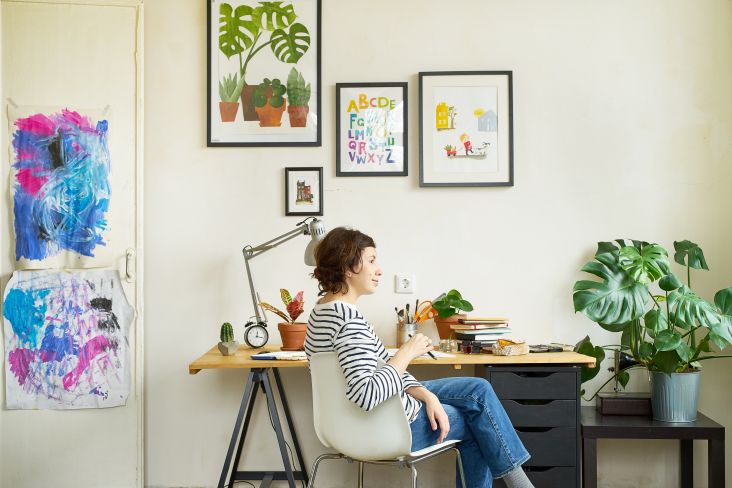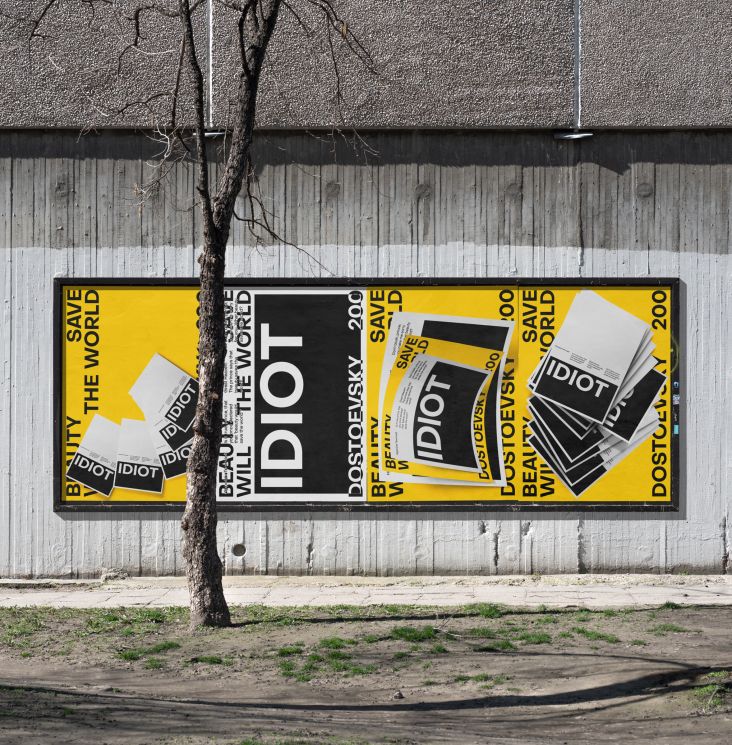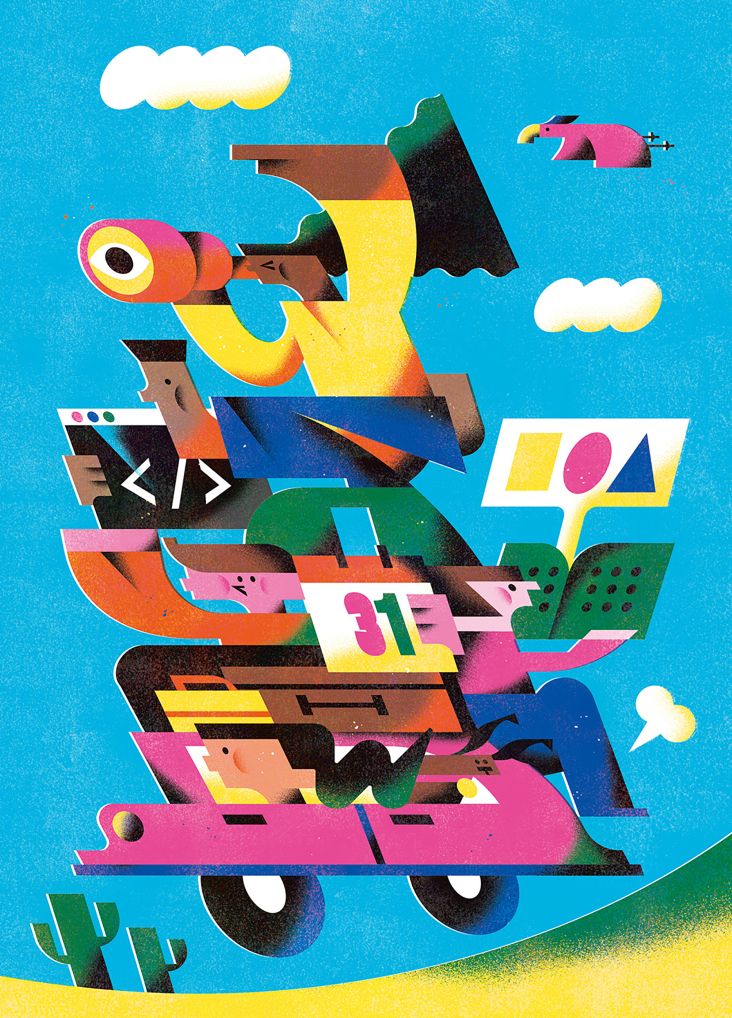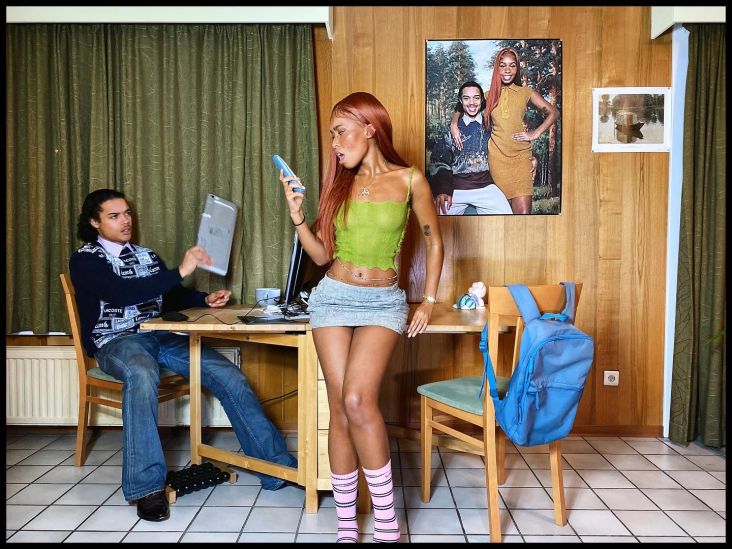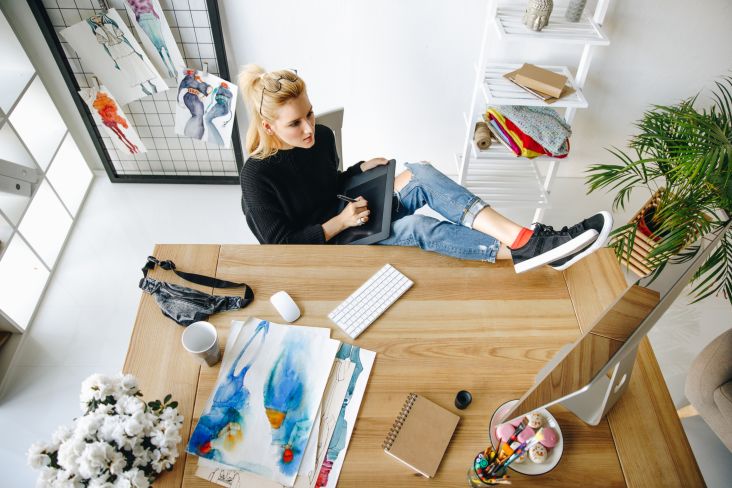The Graphic Designer Salary Guide for 2022
Are you earning the right salary as a graphic designer? In this article, we'll explain how to go about calculating whether your salary is fair. And if it turns out your pay is falling short, share advice on how to negotiate it upwards.

Image licensed via Adobe Stock
The first step on the road to estimating what your salary should be is to see what other graphic designers in your area are being paid. That's easy if, say, you live in Norway where, since 2001, you have the legal right to access anyone's salary details online, no questions asked. In most countries, though, people tend to keep their pay to themselves, so it's trickier. That said, the graphic design community tends to be pretty friendly, so there's no shame in asking people directly on social media or in person at events. The worst they can say is no.
Another good way to get a feel for what people are being paid is job sites that advertise new vacancies. As well as looking at the salaries connected to individual job adverts, these sites also tend to compile and share statistics. For instance:
The average graphic designer salary in the UK is currently £28,469, according to Reed.co.uk. That's based on 444 jobs currently listed on Reed, which range from £26,427 to £31,255. Note that 76 jobs pay more than the average, which means it's logical to infer that the majority (368) pay less.
Meanwhile, in New York, Salary.com reports that the average graphic designer salary as of 27 December 2021 was $61,125, with the salary range typically falling between $55,219 and $64,972.
In Sydney, Australia, the average graphic designer base salary is $58,395 as of 16 December 2021 according to Payscale.com. The base salary range typically falls between AU$46,000 and AU$76,00, with the total salary including bonuses ranging from AU$46,000 to AU$83,000.
In Cape Town, South Africa, the average salary for a graphic designer is R214,430 as of 21 December, according to Indeed.
However, if these salaries are higher than what you're currently being paid, don't panic. Firstly, many positions are never advertised on jobs sites which means we're only dealing with a limited sample. And secondly, an average figure is just that; an average. Salaries within the graphic design profession can vary depending on various factors, including experience, education, specific skills you have, and your particular specialism. So let's look at some of these factors and how they influence your salary as a graphic designer.
Level of experience
It doesn't take a genius to realise that more experienced graphic designers are going to be paid more than those with less experience. A veteran is going to be much more useful to an employer, as they'll be more capable of dealing with a wider range of tasks, will be more confident in managing a team and more seasoned at presenting to and negotiating with clients.
However, there are no hard and fast rules about how many years of experience equates to what kind of salary because experience is as much qualitative as quantitative. For example, a graphic designer who's spent two years doing basic artworking tasks may be considered less experienced than one who's only done one year in a job but was catapulted via a "battlefield promotion" into working directly with a major client.
That said, all things being equal, you can usually expect to spend the first year to two years of your career as a junior graphic designer, which is an entry-level position at the bottom of the pay scale. The next step up in pay and responsibility is graphic designer, although some of the most talented new graduates may enter directly at this level.
Further promotions will propel you to, in turn, middleweight designer, then senior designer or art director, and ultimately creative director. Each stage should come with a bump in salary, and glancing through job ads will give you a good idea of what sort of money that should mean in practice.
Specialism
While the career progression we've outlined above is a standard one, it's by no means the only way to go in graphic design. In a world where new technologies are emerging daily, it's almost certainly going to pay to specialise. And the more specialised your role is, and the more specialised knowledge you have, the more your salary is likely to rise.
The most lucrative specialism at the moment is UI/UX design. That's not surprising, considering that the world is shifting pretty much all of its activities towards the digital sphere. This means good UI/UX designers are needed everywhere in business, government and beyond, to create interfaces that ordinary people can interact with smoothly and efficiently. If you've ever experienced pain and frustration trying to fill in a form, find information or order something online, you'll know exactly what we mean.
Motion design is another specialism that employers are crying out for right now. Alternatively, there are also less "sexy" but equally well-paid niches you may want to investigate, such as packaging design, service design and environmental design. Again, checking the jobs boards in your area will help you discover what kinds of roles are in demand and what they're likely to pay.
Location
As we just noted, it's job ads in your area that are the most useful to use as a comparison, because salaries really do vary from place to place, both within countries and around the world. As a general rule of thumb, big cities tend to attract higher salaries, although the cost of living is higher too, so the amount of disposable income you'll end up with tends to even out overall.
Quite how this ties in with the rise of remote working caused by the pandemic, however, remains to be seen. For example, in the UK, the current advice from the government is to work at home wherever possible, so someone who lands a job with a London-based company but lives in another part of the country may find that the cheaper rent more than compensates for the cost of train tickets to the occasional meeting. At the same time, most creative directors we speak to are craving the return to physical contact with their teams when that's allowed again, so this dynamic may be short-lived.
Agency vs in-house
So far, we've assumed that your preferred career route will be a salaried role at a design agency. Most people see it as the ideal design career, and this view is widely echoed in graphic design university courses. But it's worth bearing in mind that in-house roles at big companies can pay much better than agencies and often are easier to get into.
Working at an agency, you'll have the chance to deal with a wide variety of clients and work across several sectors. Working in-house, conversely, your focus will be much narrower, and you won't interact with clients as such. That said, you'll get a much deeper and more meaningful knowledge of one company/sector, which may allow you to command greater salaries as time goes on. So there's no one right or wrong path. It's really about what kind of approach sits best with you.
How to level up and get paid more
You've assessed all the factors affecting your salary and compared what you're being paid with people in similar positions and/or by looking at job vacancy ads. You may conclude that you're being paid fairly, in which case, happy days! If you feel, however, that you're being underpaid, then it's time to take action. In the final section of this article, we'll share some tips to help you do so.
1. Cover the basics
In most design roles, you don't get a pay rise automatically; you have to earn it. So to kick off, senior designer Mark Karwowski offers a handy checklist of things you need to do.
"Gain experience and skills to earn a pay rise," he says. "Experience must be gained and shown through your actions. You may have to move companies to get a better salary. Network and get involved in the industry, as not all jobs are posted online. And finally, be kind and have empathy. However talented you are, people still must want to work with you and pay your worth."
2. Gather evidence
It would be nice to think that just by doing good work, your employer will notice and reward you financially. In the real world, though, that rarely happens. Instead, you need to gather evidence for your success and share it persuasively.
"Keep a log of what you excelled at and how that brought value to the business," says senior designer Eve Warren. "Even the small things count! It can take courage to ask for a pay rise, but keeping a list of your KPIs and how you achieved them is a great place to start when you prepare for a review."
"I think this is such good advice and something I wish I'd thought of years ago whilst struggling to get pay rises!" adds graphic designer and illustrator Graeme Newman. "Taking the subjectivity out of pay rise conversations and having measurable evidence always strengthens your hand."
Ultimately, it doesn't matter what average salaries are. An employer is only going to raise yours if they're desperate to keep you from going elsewhere. So it's up to you to make yourself indispensable.
3. Take the initiative
Once you've gathered sufficient evidence that you deserve a pay rise, you wait for an opportunity to bring it up. But if that opportunity doesn't arise, then it's up to you to create it yourself. Remember, it's not only seniors who can request meetings with their team: you can do the same.
"In a busy industry, you can feel undervalued or overlooked when your seniors aren't seeing what you feel is your great ethic and work ability," says design director Ry. "So if you feel like it's time to move up the ranks, then arrange a sit down with your CD and run a show and tell: it demonstrates passion and drive."
4. Ask don't demand
It's one thing presenting evidence that you deserve a pay rise, but you have to be subtle about it. No one likes a moaner and even less someone who throws tantrums. So if you come across as OTT, it's more likely to harm than help your prospects.
"From personal experience, I think it's important to remember what not to do when asking for a raise or seeking promotion," says designer and art director Steve McInerny. "Ask don't demand, and learn to 'read the room' to assess whether progression is ever going to be forthcoming in your current role."
5. Make yourself indispensable
Ultimately, it doesn't matter what average salaries are. An employer is only going to raise yours if they're desperate to keep you from going elsewhere. So it's up to you to make yourself indispensable.
"That means going over and above, without being asked," says multidisciplinary designer Chris Wilson. "Show a desire to progress within the agency and build a role that becomes integral to their offering. Don't demand: instead, have a respectful conversation. When it's clear what value you bring, it should help negotiate a rise or promotion."
6. Ask the right questions at the outset
Making yourself indispensable relies on knowing what your employers actually need most from you. With that in mind, art director and brand designer Kirsten Murray offers a useful tip. "'How would my success in this role be measured?' is a great question for folk to ask at an interview," she advises. "If there are no clear benchmarks or procedures for this, it's much harder to make a case for future promotions and pay rises."
7. Get creative with negotiation
Sometimes your employer will genuinely want to give you a raise, but there's simply no money in the budget. If that happens, graphic designer Dom Edwards suggests a way to save face. "If they can't offer you more money right now, think about how else you could benefit from a promotion," he suggests. "For example, rather than asking for a salary increase, you could ask to work 4.5 days a week but remain on the same salary. It worked for me!"
8. Don't take salary too seriously
Finally, a reminder that most of us don't become graphic designers for the money alone: being creative, enjoying work and having a good work-life balance are all more important.
"I'd advise to not get hung up too much on salary," says designer Ross Middleham. "Just be positive, good at what you do and keep on learning. Be kind and as useful as possible. This will hopefully put you in a good position should opportunities arise."
Similarly, designer and illustrator Alison Cook queries whether getting paid more should be the only marker of success. "I work for a charity near Winchester, instead of in advertising in London," she says. "My salary is now what it was in 2005. But my work life is much richer and more fulfilling."




 by Tüpokompanii](https://www.creativeboom.com/upload/articles/58/58684538770fb5b428dc1882f7a732f153500153_732.jpg)


 using <a href="https://www.ohnotype.co/fonts/obviously" target="_blank">Obviously</a> by Oh No Type Co., Art Director, Brand & Creative—Spotify](https://www.creativeboom.com/upload/articles/6e/6ed31eddc26fa563f213fc76d6993dab9231ffe4_732.jpg)








